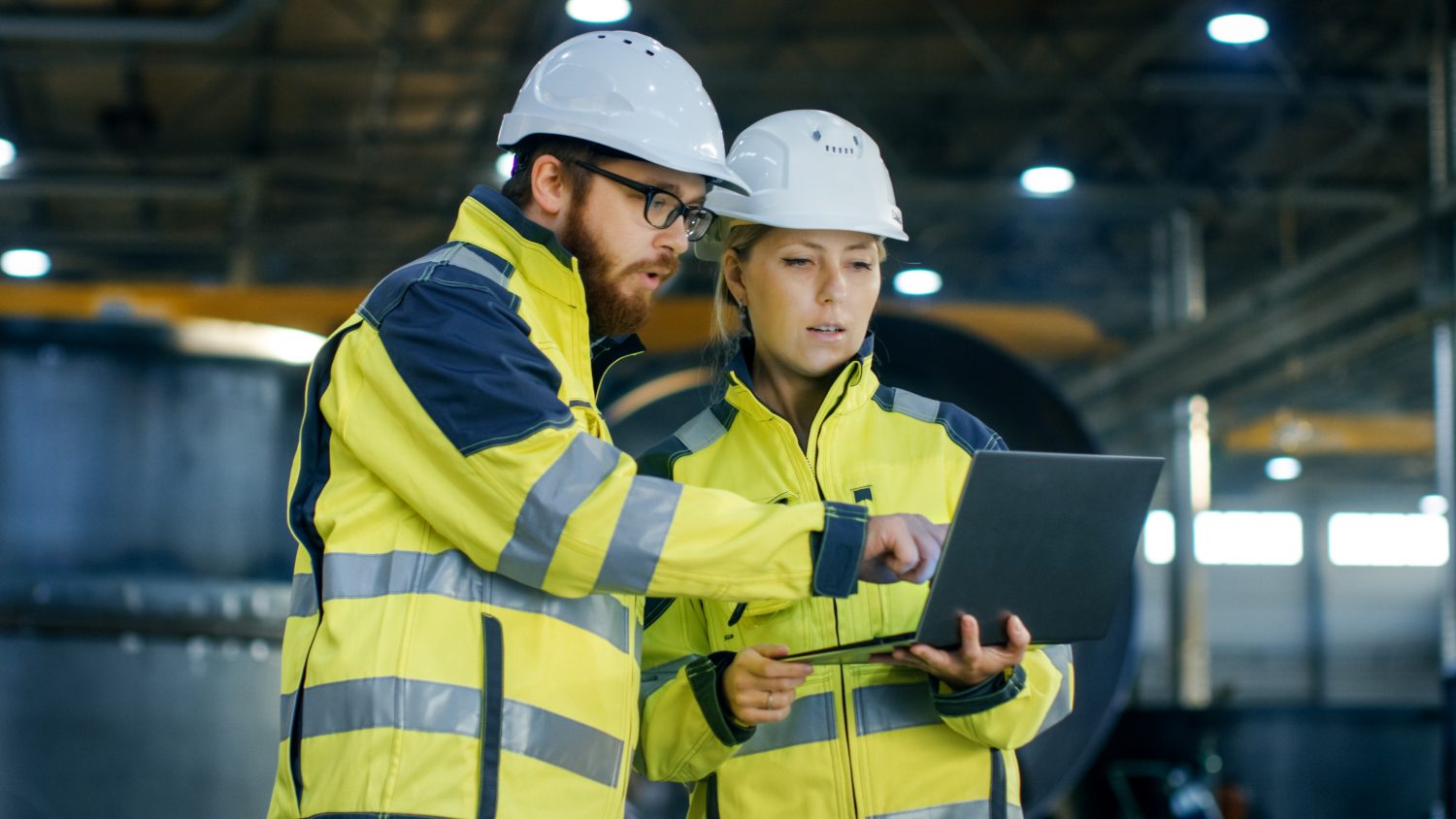

How Timewise helped the Christie NHS Foundation Trust tackle recruitment and retention challenges, and create a reputation for proactively encouraging a positive work-life balance, through flexible working.

The Christie NHS Foundation Trust comprises a specialist cancer hospital based in Withington, Manchester, with satellite centres at Oldham and Salford. It is also a founding partner of the Manchester Cancer Research Centre, alongside with Cancer Research UK and University of Manchester.
The Trust employs over 3,000 employees and was the first NHS high-energy proton beam therapy centre in the UK, providing an advanced form of radiotherapy.
All NHS Trusts face challenges with recruitment and retention, as there are fewer people than there are roles that need filling. Additionally, NHS Staff survey results highlighted that the Trust was not perceived by staff to be open to flexible working, even though there were some pockets with excellent provision.
The HR team at the Christie came to Timewise because they wanted to proactively address these challenges. they also wanted to differentiate their organisation from other local trusts as a great place to work, which proactively encourages a positive work/ life balance.
The team felt that their reputation for delivering outstanding patient care needed to be mirrored by one of delivering outstanding staff care. They wanted to develop a proactive approach to flexible working which was open to all, whatever their personal circumstances, and to be known to be supportive of staff engagement, wellbeing and work life balance.
Following a recommendation, they approached us to support them in a programme to develop a more flexible culture and practice.
The programme began with a kick-off workshop, hosted by Timewise and attended by a project team made up of a cross-section of senior managers from across the Trust. We then carried out an audit of the Christie’s flexible culture, data and policies, and some staff engagement sessions.
Using the feedback from these sessions, we then ran a visioning workshop with the project team, helping them understand their current position on the Timewise Flexible Maturity Curve and where they wanted to get to. This was followed by an action planning workshop with the project team. We then supported the creation of a flexible working action plan which set out clear goals for the next two years.
The Covid-19 pandemic has put the implementation of the action plan on hold, and so limited the learnings that have been gathered at this stage. However, it has also helped remove some of the barriers to flexible working that had previously existed, and encouraged a perception that flexible working can be made to work.
Early learnings from the programme to date include:
Goals written into the action plan include:
Setting up a flexible working/job share pool to help staff buddy up and share roles.
Working in partnership with Timewise to expand our flexible working practice was a real success. It was so helpful to have an external insight into our flexible status and what we needed to do next, and we felt confident about being guided by their expertise. As well as hands-on support for each of the programme stages and events, they were responsive and helpful with any questions or issues we uncovered, and felt like a part of our extended team.
Natalie Marshall, Head of Operational HR, The Christie NHS Foundation Trust
If there’s one phrase I’m hearing more than any other right now (apart from “You’re on mute”), it’s ‘hybrid working’. In meetings, in articles, in podcasts, everyone is talking about it; it seems it’s one of the main strategic priorities of 2021.
But despite all the discussion, not everyone seems to agree on exactly what it means – or understand how to do it well. So, here’s the Timewise lowdown on what it is, why it matters and how to make it work.

Hybrid working has always existed, but its prevalence has been turbocharged by the pandemic and subsequent remote working experiment. There isn’t yet a definitive definition, but at its core, it’s an arrangement in which an individual, team or organisation work part of their time at the workplace and part remotely.
In the brief periods in 2020 when office workers were allowed back into the workplace, the need for social distancing meant that most only went in for part of their working week. As a result, many employees experienced a hybrid pattern for the first time – and the evidence suggests they’re keen to stick with it.
At its best, hybrid working is about matching the task to the location, and doing the right work in the right place; there are numerous examples of people saying they work more productively on certain tasks from home. And from an employer’s perspective, there are many positives too.
Hybrid working, like flexible working in general, offers huge benefits for employers who take it seriously and deliver it well. These benefits are well-established by now, but here’s a recap of the main ones:
Thanks to the leaps that have been made in technology, it’s possible to be present in, and contribute to, most meetings, even when you’re elsewhere. And for those of us who have long been interested in flexible working, it’s worth noting that the focus on hybrid working, and the changes as a result, are hugely beneficial for part-time employees, as well as full-time hybrid ones.
However, while the benefits are clear, hybrid working isn’t risk-free. Here are some of the issues you need to consider:
What these issues clearly show is that this isn’t something you can leave to chance. Just telling your people they can split their week between home and the office and then crossing your fingers and hoping it will work itself out won’t wash.
Instead, you need to work to develop a hybrid culture, in which:
Already, different organisations are finding new ways to tackle this; for example, in some workplaces all meetings take place digitally, so that those at home have equal representation to those in the office. And some leaders are taking this as an opportunity to completely rethink what their HQ is used for, such as remodelling the office as a place for relationship building and collaboration rather than producing work.
There’s a lot to think about, certainly – but if, as seems likely, hybrid working is the future, it’s worth investing the time and training to get it right. We can help; as well as running a series of workshops on all elements of flexible and hybrid working, we have also created a new Flex Positive Programme, to help employers design and develop future-fit workplaces. If you’d like to know more, please get in touch.
Published June 2021
As 2020 crawls to a close, one thing is certain; the workplace will never be the same again. It’s pretty clear that a degree of remote working is here to stay; a survey by the IOD suggested that 74% of firms are planning to maintain the increase in home working. And at the time of writing, the Prime Minister has told all workers in England to work from home if possible until April 2021.
Clearly, there are many upsides to remote working; from the time gained by skipping the commute and the related positive impact to mental health, to a general perception that it makes it easier to balance work and life. And the growing acceptability of hybrid working set-ups, where you work in the best place for the job in hand and the needs of your team, is a real step forward.
But it’s also important to recognise that the remote working we’re seeing right now isn’t normal; it’s universal, and enforced, without reference to whether it’s the best way to tackle that day’s or week’s workload. So it’s not surprising that, in our conversations with businesses, we’re hearing lots of examples of how it isn’t working as it should.
This doesn’t mean that home and hybrid working arrangements should be phased out once the pandemic is over. Employees want to keep them, and they can be a useful part of any organisation’s flexible toolkit. But simply replicating office-based practices isn’t enough. As with any flexible role, these arrangements need to be designed properly, and managers need to be skilled up to support the people who are using them.

The concept of Zoom fatigue – the exhaustion felt by people as a result of online meeting overload – was much discussed at the beginning of the pandemic. Some employees, particularly younger ones and those living alone, have wrestled with a lack of proper workspace, with some even reporting feeling judged by their home environments. The blurring of boundaries is also a recognised problem. And smart decision-making and creativity have both been noted as being negatively affected when whole teams work permanently from home.
Additionally, there is a growing sense that, without careful oversight, the move to a hybrid set-up, with some in the office and others at home, may lead to women and ethnic minorities being excluded from key decisions and limiting the diversity of opinions which are heard. Or that the extroverts in a team will choose to go in, and the introverts to stay at home, affecting their visibility and progression path, and encouraging groupthink.
These are tough issues to work around – but if we just roll over and accept them as the price we pay for more flex, we risk rowing back on all the progress that’s been made. Instead, we need to tackle them – and the best way to do so is by making sure line managers and other leaders are properly skilled up.
Well-trained, properly skilled managers know that they need to trust their remote employees, rather than force them to stay logged in to Zoom all day so they can keep an eye on them. They understand that having an 8.30 meeting every day to check that everyone is working can be counterproductive. They appreciate that, when physical interaction isn’t possible, other ways of connecting teams have to be found. And they realise that, in an era of job uncertainty, employees need to be encouraged to switch off, not left to put in ever longer hours for fear of being let go.
To succeed, managers need to know how to design flexible roles – whether part-time, remote, or a combination of the two. They need to understand how to manage flexible employees, and how to ensure that hybrid-working teams are still able to work productively together. But these aren’t skills that people can just pick up. They need to be taught; and that’s where we come in.
Training managers to build and develop successful flexible teams has long been a core part of our work here at Timewise. And now, from our work with clients and other organisations during the pandemic, we have gained a unique set of insights that are specifically relevant to building these skills in the current circumstances.
We can support employers in a range of ways; from workshops and training sessions to participation in our new Flex Positive Programme. So if you, like us, believe that this is a critical time for developing the leadership skills that will make a success of flexible and hybrid working, feel free to get in touch to see how we can help.
Published December 2020

If you were asked to guess the biggest cause of death in the construction industry, what would you say? Most people would assume that the answer is something to do with on-site accidents. But they’d be wrong: in fact, it’s suicide, with male construction workers three times more likely to take their own lives than the average male.
It’s a shocking statistic, and one which is largely due to the long-hours culture that dominates the industry. With 20 hour days commonplace, and only 10 % of roles advertised with any kind of flexibility, it’s no surprise that construction workers suffer from mental health problems, struggle to balance work with their families, and end up burnt out.
Equally unsurprisingly, women don’t want to work in the industry; female participation currently stands at 15%, mainly in office-based roles. And although efforts have been made to try and attract more women, little has been done to address the workload and work-life barriers that are keeping them away.
With such deep-rooted problems to overcome, a deep-dive approach is required; and that’s what we’ve been doing. In 2019, we began a Timewise Innovation Unit project with four construction companies; BAM Nuttall, BAM Construct, Skanska and Willmott Dixon, supported by Build UK and the Construction and Industry Training Board. The project aims to explore the options for making construction more flexible; to identify key barriers, design and pilot solutions, and share what we’ve learned across the industry.
So, what have we learned so far? Well, our initial diagnostic phase put meat on the bones of what we had suspected; that the structure and culture within construction are not just unsupportive of flexible working, but bordering on incompatible:
Having identified and fleshed out these core issues, we then planned to run a series of pilots, starting in Spring 2020. These set out to assess the potential of allowing teams to have some input into their shifts and working patterns, and pilot the best way to deliver it. The work included:
The project was put on hold during the first lockdown – but on the flip side, once companies were allowed back on site, it helped accelerate some of the plans. The need for social distancing, for example, meant that site managers were forced to explore staggered start times and virtual team briefings, with positive results.
For now, the work continues. We’re supporting sites who have fast-tracked their plans, skilling up managers to implement the changes and make sure they’re fair, inclusive and sustainable. For those who were unable to do so, we’ve now started work. And of course, we’re capturing insights from this pilot phase to support a consistent approach to scaling up at a later date.
It’s worth noting that, with inflexibility as entrenched as it is within this industry, it can feel like an impossible challenge. Indeed, it’s no exaggeration to say that, when we started, the response from some was that nothing could or would change. There was a widespread belief that the issues were too deep and that current working practices would always stand in the way of culture change.
We don’t doubt that changing this industry is a complex job – but we also firmly believe that it’s a critical one. People are leaving and there’s little incentive for others to replace them; the rest of the world is becoming more flexible, and construction mustn’t get left behind. Additionally, given the pivotal role that construction plays in our country’s infrastructure, there’s a real opportunity to reskill and redeploy workers who have been adversely hit by Covid-19 as we build back up.
The pandemic has opened the door a crack and our project aims to wedge it open; we’ll keep you posted.
Published November 2020

How has your organisation responded to the pandemic? If your workforce is mainly office based, it’s likely that you’ve adapted some of your processes to manage the increase in remote working.
But have you reassessed your approach, and developed a proper long-term strategy based on new ways of working? We’re here to offer you flexible working support, with our new Flex Positive programme.
The fact is, the world of work has fundamentally changed – and there is no going back. 13 million people intend to ask to hang on to some of their flexibility permanently. Some are even planning to move further away from cities on the basis that they won’t need to commute to the office as frequently. As a result, many executive boards are having serious conversations about their workplace infrastructure, and rethinking their real estate strategy.
Additionally, the pandemic has triggered a growing realisation that the inclusion and wellbeing of key groups needs to sit at the heart of workplace strategies, rather than being treated as HR add-ons. It has highlighted, for example, that people with caring responsibilities or health issues face extra challenges, and need different support and set-ups to do their best work. This is particularly relevant to the hybrid model of working which is becoming more common.
The good news is that an increasing number of employers now recognise this, and understand that they need to build management capability in order to tackle it successfully. But there is a disconnect between their perception and that of their employees. A recent survey indicated that, while 74% of employers feel they are helping their employees learn the skills they need to work in a new way, only 32% of employees agree.
Clearly, then, there are challenges ahead for employers who want to benefit from the opportunities that new ways of working can bring. We believe these challenges are best tackled by taking a fresh approach to creating and embedding a sustainable flexible culture. And thanks to our years of experience in this area, combined with the unique insights we’ve gained over the past six months about how our clients are tackling the situation, we’re ideally placed to show you how it’s done.
Over the past 15 years, we have given flexible working support to hundreds of employers, helping them develop two-way flexible solutions that deliver on business challenges whilst supporting employees. Our client list ranges from SMEs and public sector organisations to FTSE 100 companies, and includes Deloitte, London Stock Exchange Group, John Lewis and Partners, Linklaters, Skanska, Guys & St Thomas’ NHS Foundation and Network Rail.
Through working with us, organisations like these have seen for themselves that flexible working can support talent attraction and retention, diversity and inclusion and productivity and progression. They’ve benefitted from helping employees improve their work-life balance, wellbeing and mental and physical health, and developed a branding edge by being known as flexible employers.
Post-Covid, these elements are more important than ever; and our Flex Positive programme brings them all together to ensure you’re up to speed. We’ll take you through a clear, step-by-step process, providing you with the tools and frameworks you need to develop and improve sustainable flexible working plans and practices. We’ll assess where you are now, help you work out where you want to be, and give you practical advice and training on how to get there. And we’ll support you to prepare for whatever the future may bring.
As we all learn to adapt to new ways of working, there will be winners and losers, and the organisations that take a proactive approach to flexible working will be best placed to succeed. We’re here to help you get it right; to find out more, email info@timewise.co.uk

The work we do here at Timewise can be summed up in one short sentence: Making good jobs flexible, and making flexible jobs good.
But over the last five months, while we’ve been delivering our free Covid-19 support programme to hundreds of organisations and employees, we have noticed a worrying trend that affects both parts of this story.
Firstly, as many organisations fight to stay in business, and hang on to as many of their employees as they can, there’s a risk that work will become more flexible but less ‘good’. Flexible work done badly is counterproductive; instead of helping employees reduce or have more control over their time, it can lead to extreme working hours and blurred boundaries.
This is bad news for everyone, but particularly affects women and people with caring or other responsibilities. It has been exacerbated during the pandemic by complications around childcare, with many being forced to quit their jobs. And for those who are able to stay and renegotiate their hours, there’s an increased risk of getting trapped in roles with reduced opportunities for progression.

The coming of the multi-generational workplace has long been anticipated – and, according to the numbers, it’s arrived. One in three of today’s workers are aged over 50, and that proportion is set to rise; many people plan to work longer, either because they want to or need to. And employers can benefit from the skills and experience that they bring to their roles.
But despite the growth in numbers, the individual implications of ageing, and how they play out in the workplace, are not always understood or explicitly recognised. And nor is how the ageing process affects what an individual needs or wants from their job role.
So how can we make sure that employees continue to be supported, and valued, as they grow in age? According to the over 50s themselves, here is one workplace practice above all others that would allow them to work successfully for longer: flexible working. And as we all grapple with the long-term impact of the Covid-19 pandemic, this issue is all the more relevant.
Over 50s are likely to be more vulnerable to the virus than their younger counterparts; many also have caring responsibilities which make the ‘return to normal’ more complex. So making sure that these older workers have flexible working options is now more important than ever.
It’s for this reason that we partnered with the Centre for Ageing Better, and a range of employers, to explore how best to support older workers with flexible working.
We carried out research to understand their reasons for wanting to work flexibly and identify the barriers that were standing in the way. We also ran pilots with two employers to explore new ways to overcome them; you can download the full report here.
By Emma Stewart, Co-Founder,Timewise
There is a lot of research coming through about how lockdown is affecting working women. And unfortunately, it all tends to point one way.
According to the IFS, mothers are 47% more likely to have permanently lost their jobs or quit, and 14% more likely to have been furloughed, than fathers. And those who are still working are more likely to be interrupted than their male partners; almost half of mothers’ hours spent doing paid work are split between that and activities such as childcare, compared to under one third of fathers’.

It’s becoming clear that, when the workplace gets back to ‘normal’, it won’t look like it did before. The crisis has challenged the concept of the office being the best place to work. And employees in all kinds of roles, whether office-based, frontline or elsewhere, have seen for themselves the benefits of working flexibly or reducing their hours.
The knock-on effect of this is an increase in demand for permanent flexibility. A recent survey suggested that 13 million people plan to request changes to their long-term pattern once the crisis has subsided.
Is this something employers should fear? On the contrary, we believe this is a catalyst that will change workplaces for the better. And so instead of worrying about opening the floodgates, leaders and managers should see this as an opportunity to be proactive, and encourage their staff to explore their options in a way that will work for the business.
It’s for this reason that we’ve created a free toolkit for employees, Beyond lockdown: How to negotiate flexible working, for the long-term . It’s part of our free Covid-19 support programme, and will help individuals understand the different flexible working options, explore which best match their role, and think through the impact on their team and the wider organisation.
Sharing this toolkit with your employees will help them consider the issues and potential solutions before they bring their request to their managers, which should lead to really positive conversations. It will also encourage them to ask for a flexible working pattern that benefits the business as well as themselves.
And critically, being proactive about offering this support will demonstrate that you’re a forward-looking, proactive employer who puts staff wellbeing at the heart of your strategy. In the post-Covid landscape, where organisations may be judged on their response to the crisis, that’s a powerful position to be in.
Our free Covid-19 programme is supported by Barclays LifeSkills and Trust for London.
Published June 2021

There’s no question that Covid-19 has ripped up the rulebook on what normal work looks like. Whole organisations and sectors, including those that have previously been considered ‘un-flexable’, are now discovering what’s possible.
And while remote working is just one aspect of flexible working, what we’re seeing is a huge mindset change. 13 million people plan to ask for permanent flexible working arrangements once lockdown is lifted. Twitter have announced that their staff can work from home ‘forever’ if they wish. 40% of medium to large employers have suggested they will permanently increase remote working options.
A once in a lifetime opportunity to transform the way we work
It is becoming clear that forward looking organisations, who want to be seen as employers of choice, can’t afford not to develop their flexible working offer. But there’s a big difference between offering remote working at speed, and delivering sustainable flexible working.
Most organisations are still in the first phase, managing the remote working experiment as best they can. But it’s now time for leaders to start thinking about the second phase, to use what they have learned to develop truly flexible workplaces. And we are here to help bridge that gap.
From crisis to opportunity: our free Covid-19 support programme
At Timewise, developing sustainable flexible working solutions is what we do. We do it for organisations and sectors of all shapes and sizes, and we do it exceptionally well. So as Covid-19 took hold, we rolled up our sleeves and worked out a plan to help employers and their staff turn this crisis into an opportunity.
The result is From crisis to opportunity: redesigning the workplace, a free Covid-19 support programme for organisations and their staff. The programme includes a series of webinars for key organisations and sectors, and practical support for groups such as line managers, with more to come. You can find out more about the programme on our bespoke Covid-19 support page.
An important part of the programme, which is supported by Barclays LifeSkillls and Trust for London, will be capturing the learnings from this time and sharing them for the benefit of all. And that sits at the heart of how we work.
Why this matters – now more than ever
As a social business, all our work is underpinned by our central mission: to create fairer workplaces in which individuals can get the flexibility they need without compromising their value in the jobs market. We believe that getting this much-discussed ‘new normal’ right is will only happen if flex and fairness are built in. Here’s what we, as a society, need to do if we’re to make this happen:
If we don’t act carefully, some key groups, such as those who are juggling work and care, will miss out. Research from the IFS has shown that working mothers are bearing the brunt of the caring and homeschooling responsibilities, and the gap between mothers’ and fathers’ work patterns has grown since the crisis began. There’s a real risk that more working mothers may drop out of the workplace unless properly designed flexible roles (and not just juggling from home) are offered to all.
The Covid-19 crisis has rightly seen a growing appreciation of frontline workers, from NHS staff to retail employees. It’s important as we go forward with flex to remember that not everyone works in an office, and those who don’t are just as entitled to, and in need of, flexible working.
At Timewise, we specialise in tackling sectors which are hard to make flexible, with recent projects focusing on construction, nursing and teaching. This kind of work needs to continue more widely, to ensure that those who have protected us during Covid-19 are protected in return with fair working practices.
There have been some great examples of human leadership during the crisis, such as CEOs talking to staff about how lockdown has affected their mental health, leaders showing by example that it’s OK if your kids come on the Zoom call and managers empowering their teams to work at times that suit them. This open, positive attitude needs to continue, with bosses creating and delivering cultures in which flexible working is properly implemented, supported and celebrated.
Dishing out a laptop and a Zoom account is a short-term fix, not a long-term strategy. Designing truly flexible roles involves looking at where, when and how much work needs to be done, and it isn’t something you just know; line managers need to be taught how to do it. Our Covid-19 support programme includes a free introductory line manager’s toolkit; we also offer more bespoke training as part of our consultancy package.
Finally, creating flexible jobs isn’t enough. We also need to make sure they are advertised as such when companies start rehiring post-crisis, particularly as many of the people who have lost their jobs will need flexibility in any role they return to. It’s not just good for employees either; a recent study showed that employers who advertised their jobs as flexible saw a 30% uplift in applications.
We’ll be tracking the jobs market through our annual Flexible Jobs Index, with a particular focus on the post-Covid-19 landscape and the impact of this global remote working experiment.
If we come together and make all this happen, we really will have turned the crisis into an opportunity; for fairer workplaces, for more equal teams and households, for better mental and physical health. It’s going to take a lot of work – and will need industry and government support and funding – but it’s a once-in-a-lifetime opportunity that’s here for the taking.
Published June 2020